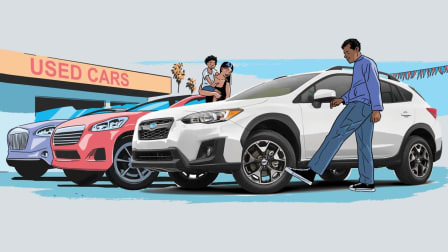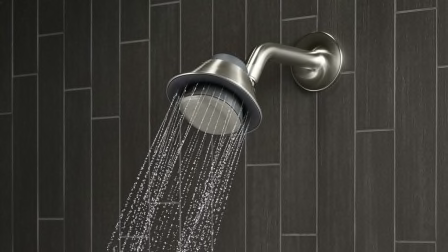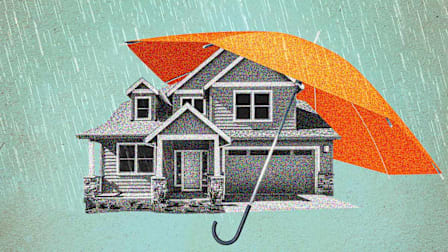Expert Tips for Buying Secondhand Products to Save You Money and Help the Planet
Thrift stores are not just for clothes. You can get great deals on home goods, electronics, and more. Plus, what not to buy secondhand
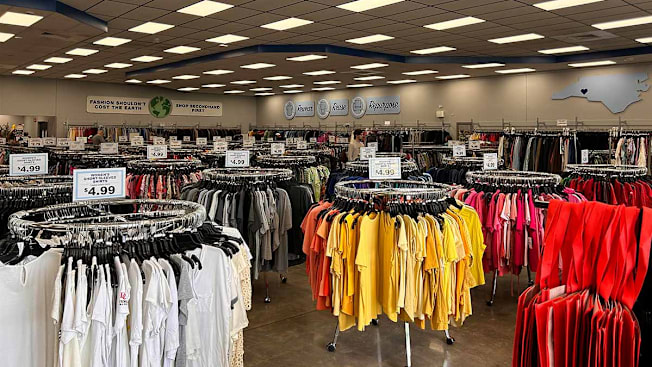
When I became more conscious about my spending habits, one of the first switches I made was shopping almost exclusively at thrift stores for clothing—a tactic that I estimate has helped me halve my spending on clothing. It was a switch that also made sense for my budding interest in living more sustainably. The thrift shops I visit in NYC often have other stuff that I’ve never considered buying until recently. With the looming threat of tariffs affecting the prices of many consumer goods, there’s a greater need to look for alternatives to buying brand-new, and not just for clothing.
- What to Buy Secondhand: Apparel and Accessories Electronics Furniture Large Appliances Small Appliances and Cookware
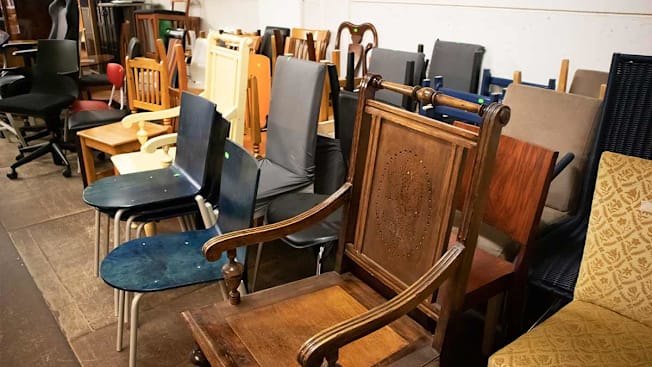
Photo: Getty Images Photo: Getty Images
Furniture
My biggest concern when I’m looking through used furniture is bed bugs. Yes, you read that right. Bed bugs do not exclusively live in mattresses and upholstered headboards. They can hitch a ride into your home on other furniture like sofas, chairs, and even bedside tables. According to information from the Oklahoma State University Cooperative Extension Service, it’s important to ask thrift shops what, if any, precautions are taken to make sure that furniture is free of bed bugs. “Heat treatments would be a good answer, especially for beds and other upholstered furniture,” say Gina Peek and Kevin Shelton of the OSU Cooperative Extension Service. Bed bugs and their eggs need to be exposed to high temperatures (like those produced by steam) to kill them.
Effective, safe insecticides and heat treatment from a professional bed bug exterminator with equipment that is suited to apply high heat to your furniture for longer periods of time is best. You should also carefully inspect all furniture, even non-upholstered pieces, for any signs of bed bugs, paying special attention to small cracks and crevices.
Inspect the furniture by using it as intended: Sit on the couch multiple times. (Does it squeak? Have weird dips? Do the seats and backs seem supportive and sturdy?) Open drawers. (Do they glide easily and feel sturdy?) Look for quality materials and inspect for mold. Smell the furniture. Does it have an off-putting odor, such as smoke or a strong chemical smell? Remember that smoke and chemical odors can have health effects on people who are susceptible to them.
That said, secondhand furniture that is free of bugs or serious damage is generally safe to buy. This does not include furniture for babies, like cribs and bassinets.
Clothes, Shoes, and Accessories
This is what you’ll likely find the most of at your local thrift stores. Just remember to give garments a wash before you wear them for the first time. Even if a thrift store says it cleans items before putting them out on a rack, you don’t know how many people have tried them on since then, if there are any bugs hiding in pockets, or if the products they used to clean the garments could cause reactions in folks with sensitive skin.
Don’t overlook a shoe with a worn-out sole, squished leather, or other damage. Cobblers are still around and can repair worn shoes, though it can be expensive depending on what exactly needs to be repaired.
As with anything else you’re buying used, inspect clothing, shoes, and accessories closely for any damage. A missing button or small hole at the elbow of a jacket is usually not a dealbreaker for me, but stains and fabric colors that appear too faded are.
Large Appliances
Large appliances can absolutely be purchased secondhand, but Kapoor’s recommendations for things to consider apply to them, too. Dishwashers, refrigerators, washers, dryers, stoves, and even microwaves should all be inspected thoroughly before purchasing. Make sure that they have a manufacturer sticker with a model number and serial sticker, ask if any parts have been repaired or replaced, and plug in the appliance to ensure it works. Though guarantees are rare at most thrift stores, finding a used appliance store or other secondhand appliance vendor that offers a quality guarantee can give you some peace of mind about shopping for a secondhand appliance. If you’re replacing an old appliance, consider the cost of repairing it before you opt for buying a new-to-you appliance.
Should You Repair or Replace Your Broken Appliance?
Small Appliances and Cookware
I’ve often spotted cookware, silverware, and small kitchen appliances at my local thrift store. Whitehurst doesn’t recommend buying small appliances secondhand, but if you can get them totally clean (no nooks and crannies where soap can’t reach), and you follow Kapoor’s recommendations for inspecting a product before you buy it, it could be okay to buy. Steer clear of the appliances that have small, difficult-to-clean parts, like coffee makers and food processors, especially if you’re going to be cooking with them.
Cookware with a nonstick coating can deteriorate over time, releasing dangerous chemicals into the food you cook on it, so it’s best to avoid buying it secondhand. Shopping for stainless steel, cast iron, and ceramic nonstick-coated cookware minimizes this risk, but it should be inspected closely for scratches, damage to the handles, and other signs of wear. Again, if there are any parts that you can’t easily clean, leave them at the thrift store.
Susan Booth, CR’s lead vacuum tester, says vacuums are one appliance you may want to steer clear of at the thrift store. “I wouldn’t necessarily recommend a secondhand vacuum unless you are handy at performing potential repairs yourself.” You have to consider how well a vacuum has been maintained by its previous owner and the condition of the battery if it’s a cordless model. Lastly, ensure that the vacuum is still sealed to keep dust emissions low (think: how well the vacuum traps all dirt and debris inside the dust bag or dustbin). Without all of this information, it’s best to skip buying this appliance secondhand. Replacing the battery of a cordless model might end up costing you the price of a low or mid-priced new vacuum. If you opt for a secondhand vacuum, Booth says to consider how clean it looks and the condition of its filters, belts, and cords.
Electronics
According to the World Health Organization, in 2019, the amount of electronic waste produced globally was equivalent in weight to 350 Queen Mary 2 cruise ships, with less than 20 percent of that waste being recycled. Since then, the amount of electronic waste on the planet rose from 53.6 million tons in 2019 to a whopping 62 million tons in 2022. If you aren’t doing it to save money, consider buying used electronics so that the products don’t end up in landfills instead.
Rich Fisco, associate director of testing in the home office and entertainment department at CR, says you can buy many electronics secondhand, but the key is the age of the electronics. “While older products will still do their core capabilities, they may lose their ’smart capabilities’ and not be able to use the newest features.” He also recommends you try to see, feel, and touch an item before you buy it. Even if it’s a thrift store, ask about any warranty or return policies. If your budget allows it, refurbished devices sold at big box stores can give you a higher level of assurance and often come with a warranty.
His list of products you can buy secondhand includes smartphones that are no more than three generations old, laptops, desktops, monitors, gaming consoles, TVs less than three years old, cameras, routers, and audio devices (except headphones and earbuds because these can be difficult to get totally clean).
Before you make a purchase, Fisco recommends plugging in any corded devices or switching any cordless devices on and making sure that they work. “For a phone, turn it on and see if it connects to WiFi, and that it is not locked to the previous user, so you can set it up your way. For laptops, turn it on to see what operating system it has.” His final bit of advice is to make sure that any electronics that require a user log-in have been factory reset.

















